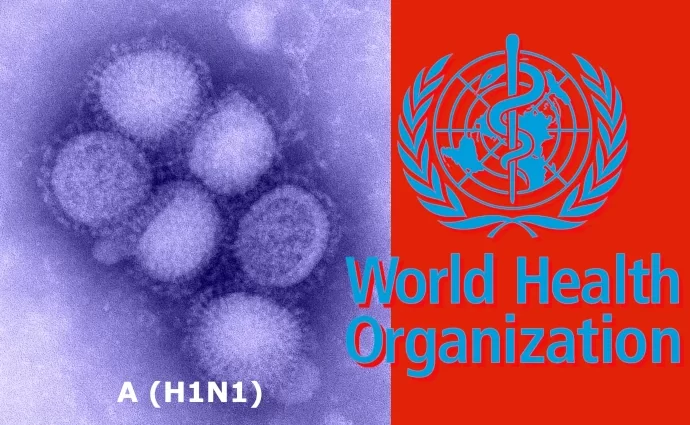On 2 September 2023, the Ministry of Health, Welfare and Sport of the Netherlands notified the World Health Organization (WHO) of a laboratory-confirmed human case of infection with a swine-origin influenza A(H1N1) variant (v) virus in the province of North Brabant, Netherlands. This is the first human infection caused by influenza A(H1N1)v virus reported in the Netherlands in 2023.
The case is an adult from the province of North Brabant with no underlying medical conditions and no history of occupational exposure to animals. On 20 August 2023, the patient developed fatigue and general malaise and the following day developed an acute respiratory infection with onset of chills, sneeze, cough, headache, and generalized weakness, followed by fever on 22 August.
On 21 August 2023, the patient reported symptoms as part of participatory surveillance[1] of acute respiratory infections and submitted a self-collected combined nose and throat swab specimen to the laboratory. On 22 August 2023, the specimen was forwarded at the Dutch National Influenza Centre location at the National Institute for Public Health and the Environment (RIVM) where it tested positive for influenza A virus and negative for A(H1N1)pdm09, both tests included on a commercial 24 pathogen multiplex nucleic acid amplification assay on 23 August.
Further routine subtyping was performed on 24 and 25 August with RT-qPCR assays. Tests for seasonal influenza viruses and H5 viruses were negative. In addition, a laboratory-developed test (LDT) and another commercial assay for generic influenza A virus detection confirmed the presence of type A influenza virus in the specimen.
Routine whole genome sequencing using nanopore technique and virus isolation were started on 28 August. On 30 August, sequencing results revealed that the virus, A/Netherlands/10534/2023, is an A(H1N1)v Eurasian avian-like clade 1C.2.2 swine influenza virus. The HA genome segment clustered closely with recent clade 1C.2.2 swine influenza viruses from 2022 and 2023 from the Netherlands.[2] It clustered less closely with previous clade 1C.2.2 A(H1N1)v (from 2019) and A(H1N2)v (from 2020) viruses from the Netherlands. Phenotypically, the virus is sensitive to neuraminidase inhibitors oseltamivir and zanamivir.
The virus isolate will be shared with the WHO Collaborating Centre in London, United Kingdom of Great Britain and Northern Ireland, and the World Organization for Animal Health (WOAH) avian and swine influenza reference laboratory at the Animal and Plant Health Agency (APHA), UK. The sequences are available from the GISAID database under accession EPI_ISL_18168180.
As of 13 September, the person is recovered. Investigations reported that the individual did not work at a pig farm or other business involving pigs and does not work in health care. Therefore, there is no clear indication of the source of infection.
Worldwide sporadic human cases of influenza A(H1N1)v have been reported previously, including from the Netherlands. According to the International Health Regulations (IHR,2005), a human infection caused by a novel influenza A virus subtype is an event that has the potential for high public health impact and must be notified to the WHO.
This case was picked up as part of routine surveillance of respiratory illnesses. Based on the available information, there is no clear indication of the source of infection, and no direct contact with pigs was reported. As of 7 September, there were no symptomatic contacts of this case and no further detections have been reported in routine surveillance. All five close contacts were followed for 10 days- the maximum incubation period and none developed symptoms. Thus, there was no evidence of person-to-person transmission and the case is considered as a sporadic human case of influenza A(H1N1)v. The likelihood of community-level spread among humans and/or international disease spread through humans is considered as low.
Read more here: https://www.who.int/emergencies/disease-outbreak-news/item/2023-DON486
Similar Posts by The Author:
- The Untold story of the ANZAC-India friendship
- VHP Australia brings Hindus together to work toward ‘growing and thriving Australia’
- Australia Post – new performance standards from 15 April
- Premier’s department fighting the release of SECRET hotel quarantine documents
- Vic Gov funds 13 programs that help international Students

